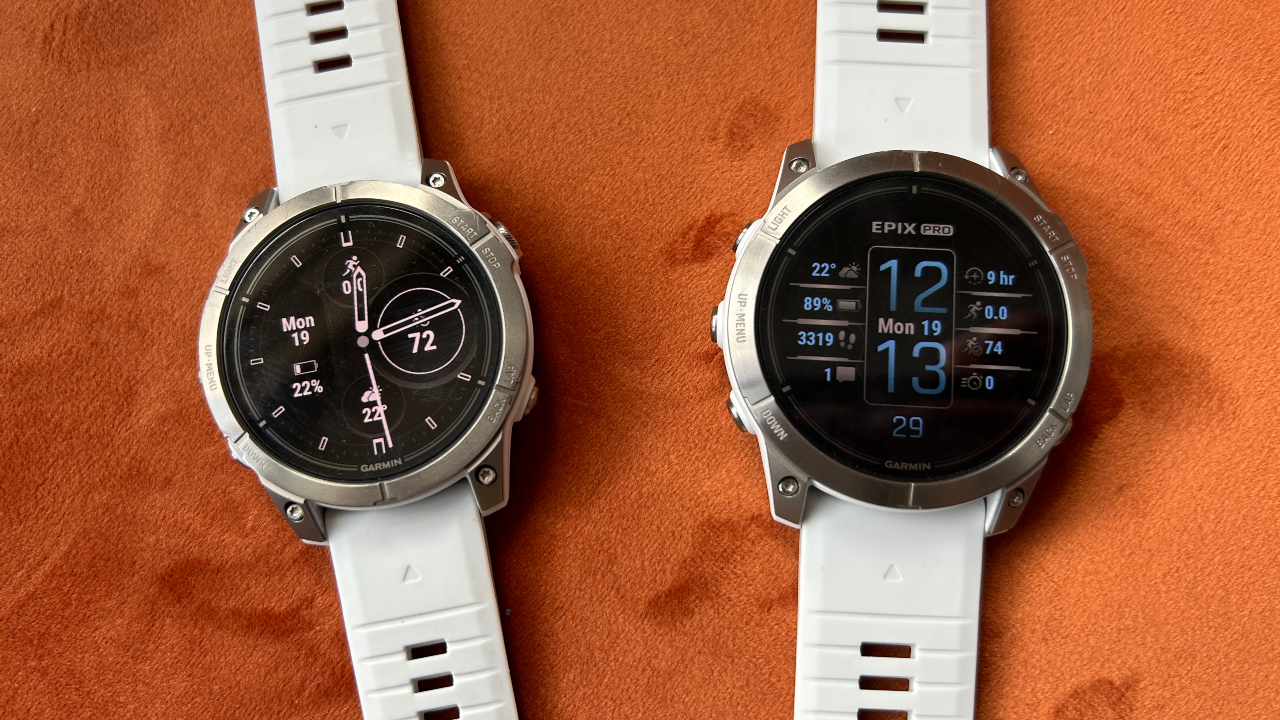
When the Garmin Epix 2 launched in early 2022 it was a sign of things to come. The Epix 2 is essentially a Fenix 7 with an AMOLED display, which for many people, myself included, made it a more attractive option.
Since then Garmin has brought AMOLED screens to two more of the best sports watches in its range, the Forerunner 265 and Forerunner 965, and as battery tech improves, AMOLED screens will only get more common in sports watches.
The Garmin Epix Pro will not make the same splash the Epix 2 did, though its new hardware features are useful. However, the largest model in its range once again shows the future of sports watches because the 51mm Epix Pro has a bright AMOLED display and excellent battery life.
Garmin Epix Pro Review: Price And Availability
The Garmin Epix Pro launched on 31st May 2023 and costs from $899.99 in the US and £829.99 in the UK for the standard model of the watch, with the most expensive models in the range costing $1099.99/£1099.99. The Garmin Epix 2 now costs from $699.99/£709.99 to $799.99/£779.99.
Design And Key Hardware
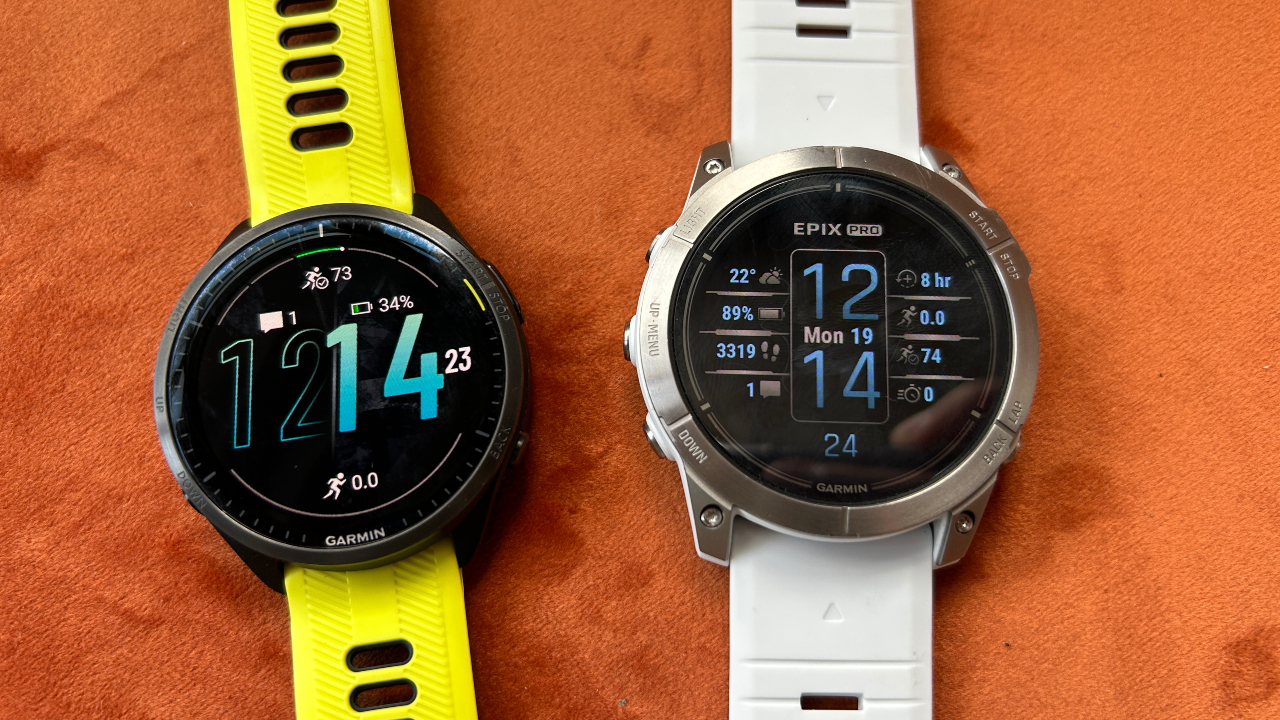
There are three sizes in the Garmin Epix Pro range, which stick to the sizing seen on the Fenix range in the past. The middle model has a 47mm case, the same as the Garmin Epix 2, with the smaller model having a 42mm case and the larger one a 51mm case.
The watches have AMOLED touchscreens: The 42mm model’s screen is 1.2in, the 47mm watch’s screen is 1.3in, and the 51mm watch has a 1.4in screen. The standard Epix Pro models have a stainless steel bezel and case back and have Gorilla glass screens, while the sapphire models use titanium for the bezel and back and have sapphire crystal screens.
The displays haven’t improved on what was available on the Epix 2—and actually only the 51mm Epix Pro’s screen matches the Forerunner 965’s in size and clarity—but they are still a delight to use, being far brighter than the memory-in-pixel screens on watches like the Fenix 7.
The 47mm and 51mm watches I tested are big devices that you notice on the wrist, though using a nylon strap rather than the standard silicone one makes them lighter. The 51mm model in particular may be too big a watch for some, and the Forerunner 965 offers a nice alternative. It’s lighter and slimmer while having the same size AMOLED screen.
The most important design update is the new heart rate monitor, which Garmin says should deliver more accurate tracking. Another notable change is that all models of the Epix Pro have a built-in LED flashlight, which has four brightness settings, as well as a red-light mode.
This flashlight is useful on occasion, so it’s an upgrade across the board, and some people will find it handy more often than I did if they are regularly outdoors after dark.
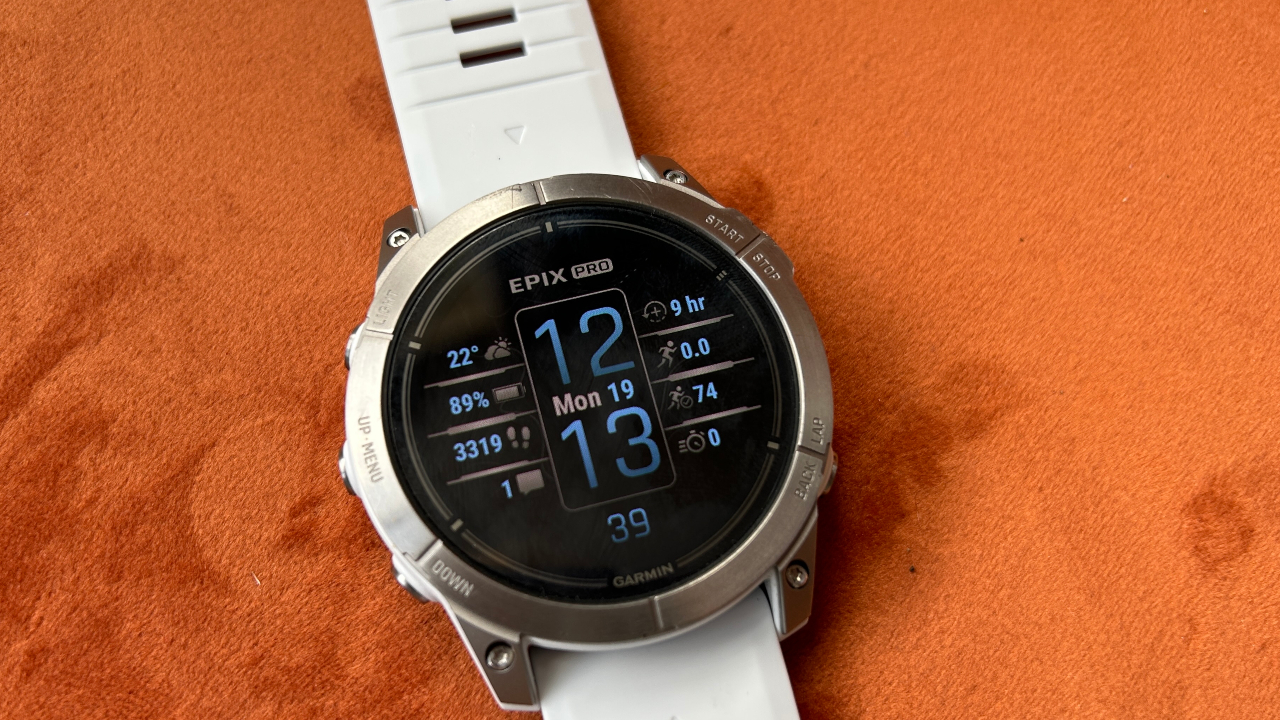
All models have multi-band GPS tracking, which was only available on the sapphire version of the Epix 2, and they have a red shift mode to change the colors on the display to shades of red late in the day to reduce any impact of the screen on your sleep cycles.
The battery life on the 47mm Epix Pro is exactly the same as on the Epix 2, while the smaller 42mm Epix Pro offers less juice, as you’d expect. What I didn’t expect was just how much more battery life you get with the 51mm Epix Pro, which will last 11 days in watch mode, even with the always-on screen enabled.
All the watches in the range have a waterproof rating of 10ATM and the sapphire models have 32GB of storage, while the standard models have 16GB. The Epix Pro has a barometric altimeter, compass and pulse oximeter, and connects to external sensors via Bluetooth and ANT+.
How I Tested These Watches
I’ve tested the Garmin Epix Pro 47mm and 51mm models over the past month, using them to track all my workouts, daily activity and sleep, testing them against other top watches like the Garmin Fenix 7 Pro and Forerunner 965, and Suunto Vertical. I have also tested a variety of the best sports watches on the market, including almost all of Garmin’s range.
HR And GPS Accuracy
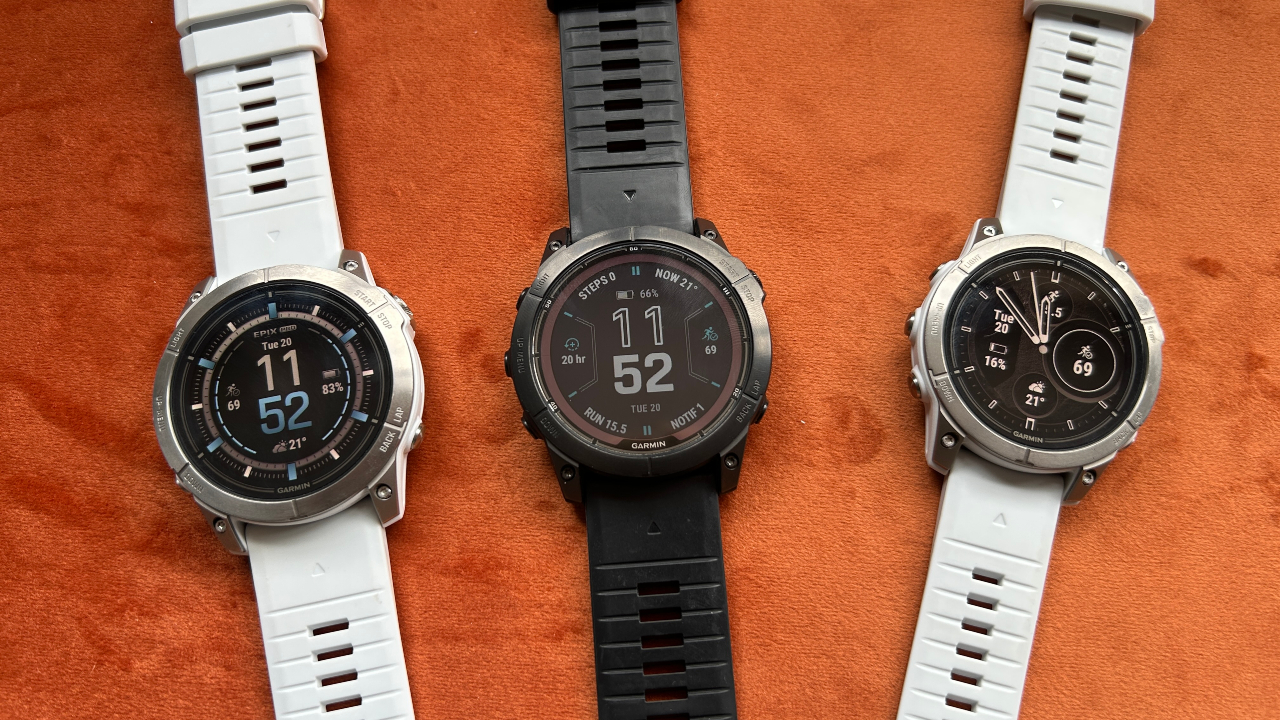
Garmin’s multi-band GPS tracking is the most accurate I’ve come across and the Epix Pro watches are exceptional on this front whether you opt to use full multi-band or the Auto Select GPS mode, which switches between satellite options depending on conditions to save battery life.
The accuracy is not infallible—when running among tall buildings in city centers the GPS tracks will wobble—but it’s as good as, or better than, anything else available.
The same is true of the optical heart rate tracking on the Epix Pro, which has the new sensor also used in the Fenix 7 Pro. The accuracy of the tracking using the 47mm and 51mm model with both silicone and nylon bands has impressed me, usually being close to the reading from a chest strap.
There are still errors though. The optical monitor lags behind a chest strap in picking up intervals where I spike my heart rate, and occasionally will miss an interval entirely. I’ve also been testing the Epix Pro watches in warm conditions when optical heart rate tracking tends to perform better.
That said, in a month of use without pairing a chest strap, running almost every day as well as doing other workouts, I can point to only a few obvious errors in the heart rate tracking.
Hill Score And Endurance Score
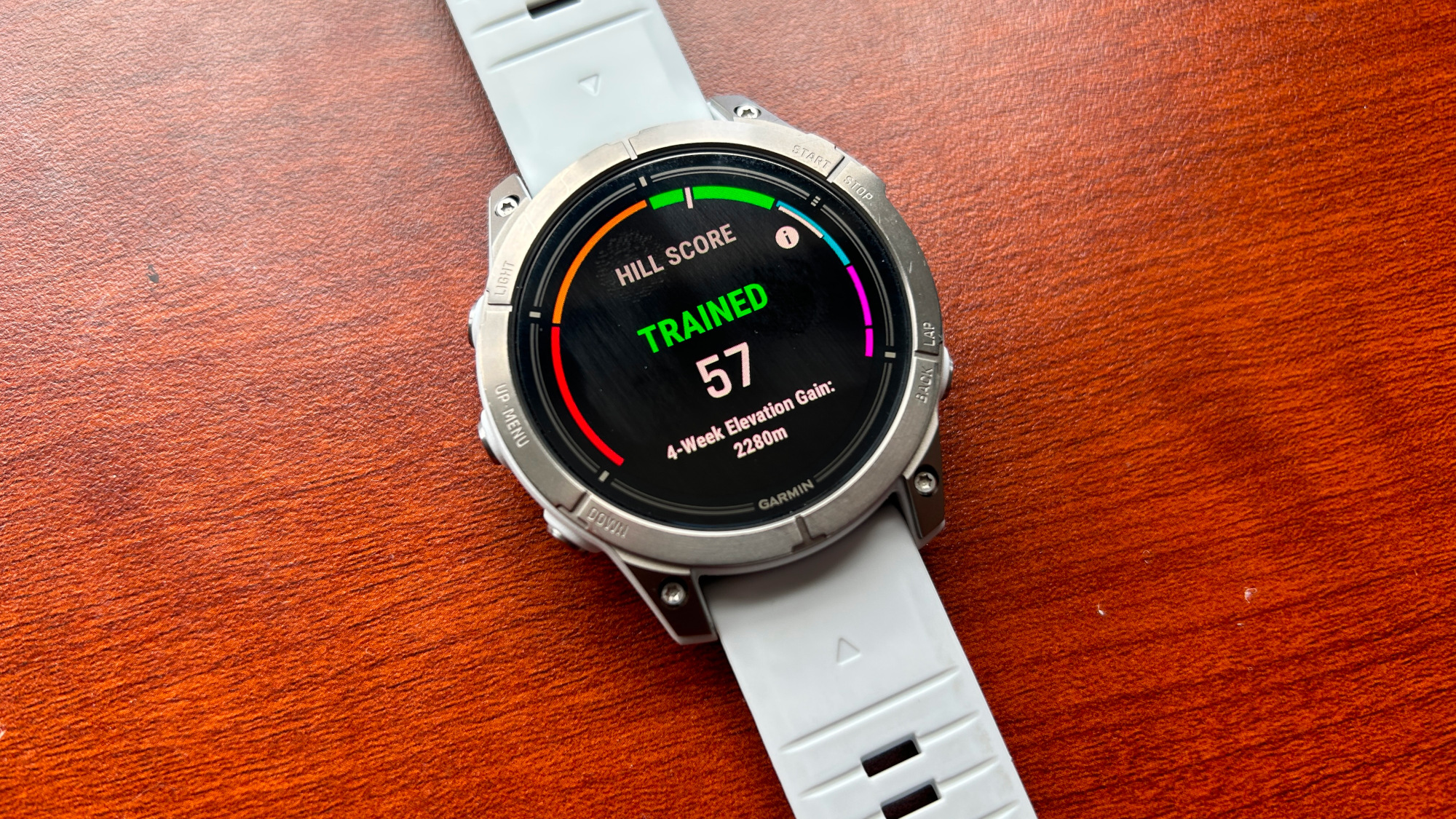
The biggest new software features on the Epix Pro are hill score and endurance score. These add to the training analysis on the watch by rating your proficiency at running up hills, and your ability to sustain long efforts in any sport. Hill score and endurance score, along with the other software updates on the Epix Pro, are all coming to the Epix 2, so are not a point of difference with the older watch.
On the watch there are color-coded ratings of both scores, and your hill score is broken down into hill strength and hill endurance. I currently have a 61/100 rating for hills, which is classed as “trained”, while my endurance score has been hovering between 9,300 and 9,800 during testing—there is no upper limit to this, but I am classed as elite for endurance.
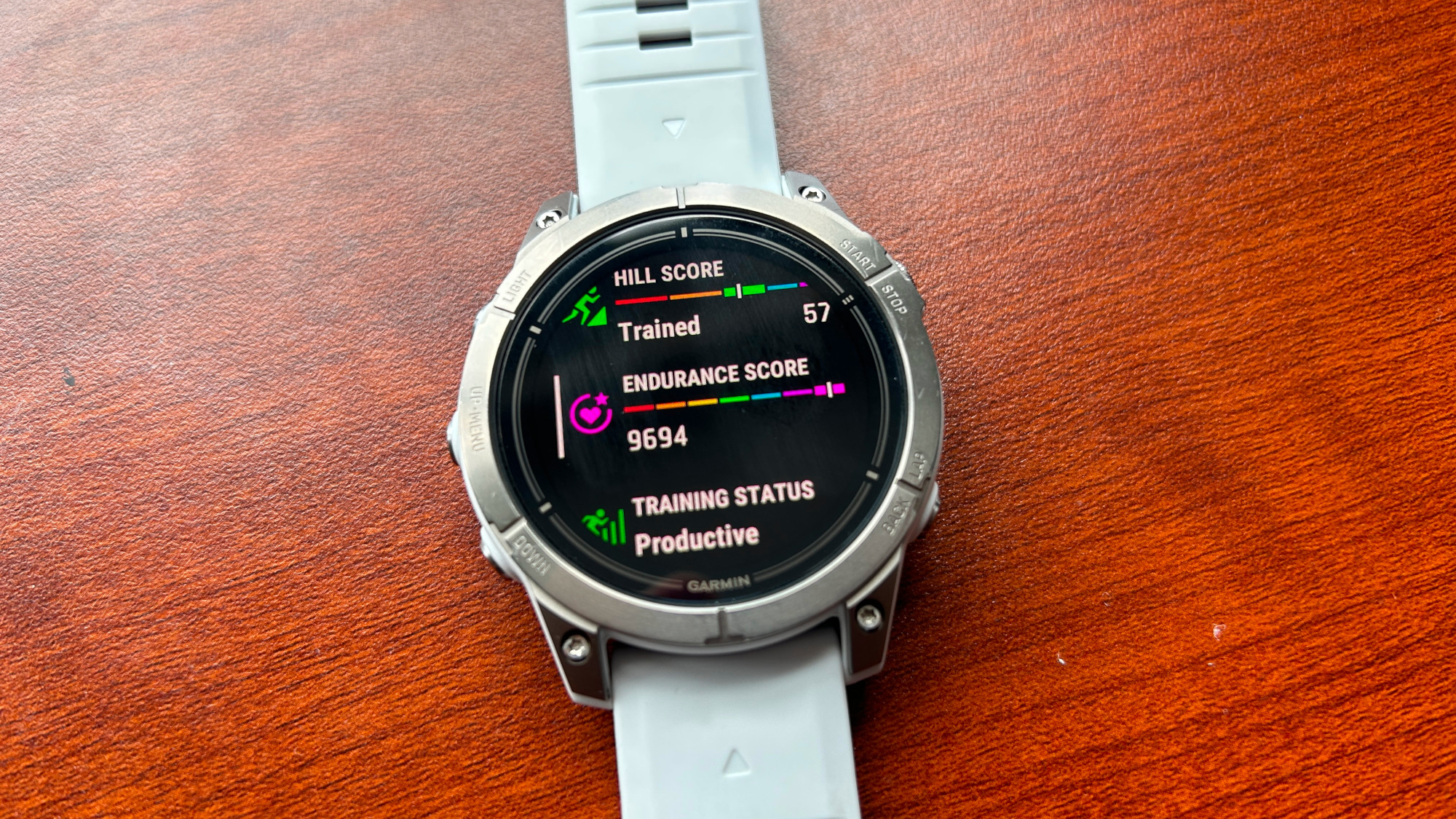
My endurance score tallies with the rest of Garmin’s training analysis, like my VO2 max and predicted race times. I’m not sure it adds a lot to the overall picture of your fitness you already get from Garmin watches, but it’s not a negative either.
Hill score is more novel, though it’s hard to rate how accurate it can be. My score seems to be based on a high VO2 max and running around 2,000m of uphill over the past four weeks, and is probably generous given that I don’t do major climbs on the gently rolling terrain near my house.
It will be a useful score for trail runners in particular, though, and a helpful metric to try and improve if you’re targeting hilly events. If you’re primarily a road runner, however, it’s likely you’ll soon start to ignore it.
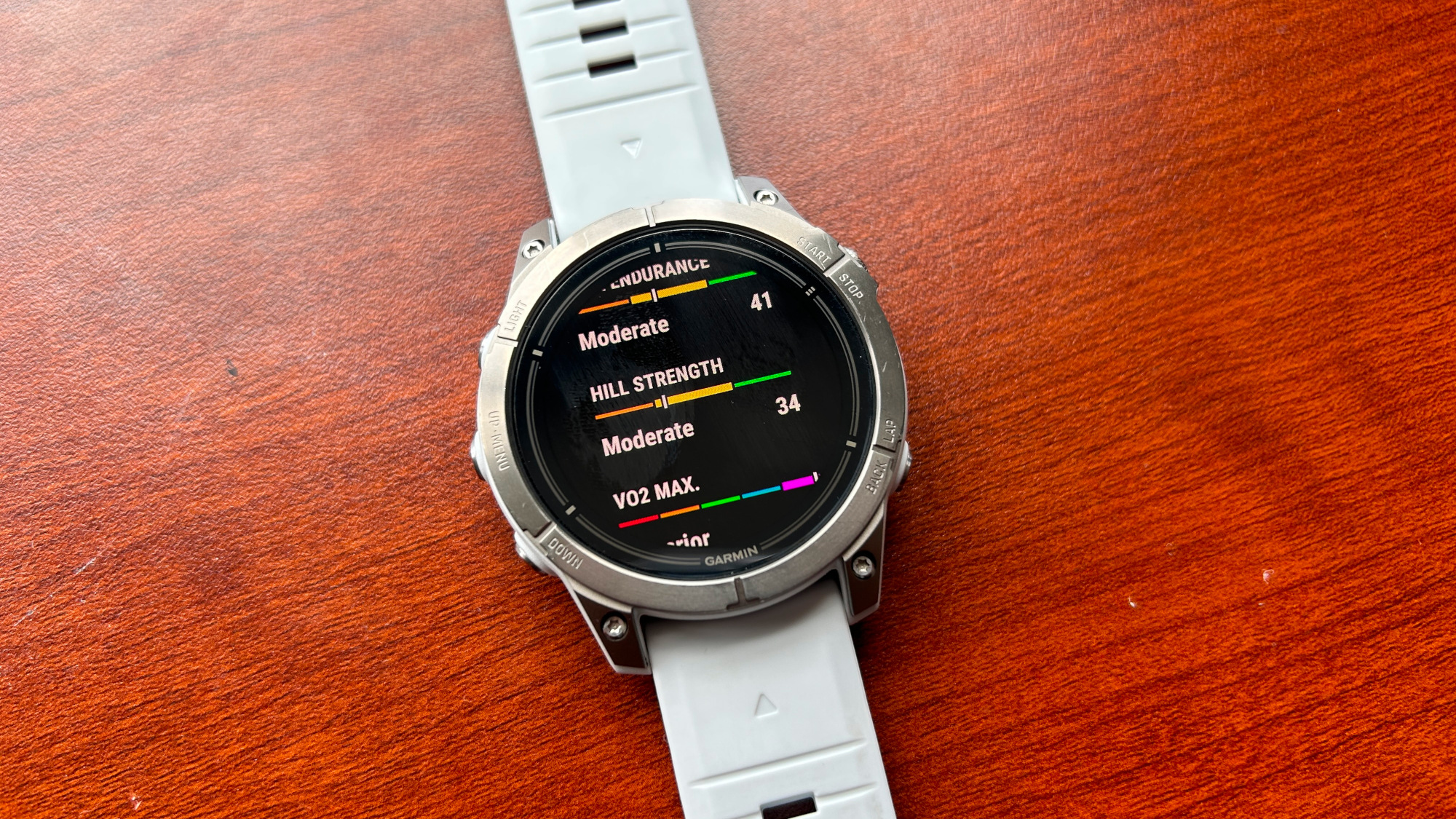
Battery Life
The battery life on the 47mm Epix Pro is nothing to get excited about, since it’s the same as the Epix 2. It lasted me around five days when tracking runs most days and getting notifications on the watch. The smaller 42mm Epix Pro takes a hit on battery life, but the talking point here is the 51mm Epix Pro, which is exceptionally long-lasting for such a good sports watch with an AMOLED screen.
With the always-on screen enabled, notifications coming in, and running most days, the Epix Pro 51mm lasted me 10 days on a charge. Set the display to raise-to-wake and the battery drain slows down—to around 5% a day with running.
I’d keep the screen set to always-on because 10 days is a great return for one charge given the bright display and the amount of tracking the Epix Pro is doing, including 24/7 heart rate and heart rate variability tracking at night. It’s not as long-lasting as the Fenix 7X Pro or Enduro 2, which can both go two to three weeks on a charge even with heavy use, but it’s impressive given the brighter screen.
Sports Tracking And Training Analysis
The Garmin Epix Pro offers the usual suite of sports tracking tools you get from the brand, including new sports modes like basketball and soccer. Every sports mode has customisable data screens, and you can add structured workouts to follow or use the daily suggested workouts for running and cycling that are designed to keep your training load balanced.
The training load is analyzed in detail on the watch and in the Garmin Connect app, so you can see if you’re doing enough to improve your fitness without pushing too hard. The Epix Pro also has Garmin’s excellent training readiness feature, which shows how prepared your body is to train based on factors like recent training and sleep.
It’s a comprehensive set of features that’s as good as, or better than, all of Garmin’s rivals on every front. For sports tracking and training analysis the Epix Pro can’t be topped, though it is matched by several other Garmin devices including the older Epix 2 and cheaper Forerunner 965.
Maps And Navigation
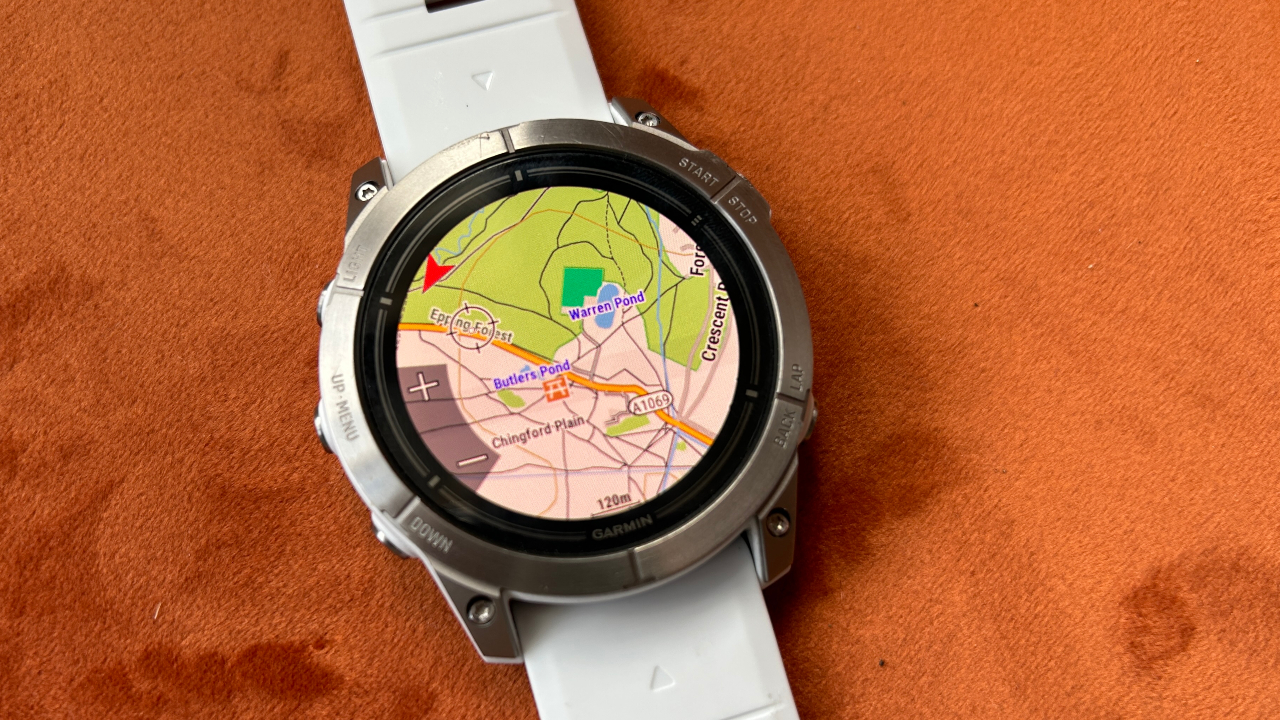
Garmin stands out in its mapping features, which include routable color maps that can create routes on the fly or guide you through pre-planned courses you sync to the watch via the app. The only feature lacking on Garmin devices is the ability to create courses in Garmin’s app, which you can do with Suunto and Coros, but otherwise the level of detail to the maps and extra features you get like ClimbPro put Garmin well clear of the competition.
There are new mapping features. Data screens allow you to see the map in a split screen with stats on the other side, or a perimeter view with a circle of map surrounded by six stats in a black ring on the edge of the screen. I find these useful for navigating while keeping an eye on stats on the run.
Smart Features
The Epix Pro has all of Garmin’s smart features. There’s music storage and the ability to sync with premium Spotify, Deezer and Amazon Music accounts for offline playback. You also get NFC payments with Garmin Pay, a weather widget that includes maps to show upcoming conditions, and the Connect IQ app store has useful add-ons like a parkrun barcode app.
It’s not a true smartwatch for me, since the app store is basic compared with something like the Apple App Store or Google Play, and there’s no cellular connectivity, though the Epix Pro has useful smarts to back up its sport tracking.
Is The Garmin Epix Pro Worth It?
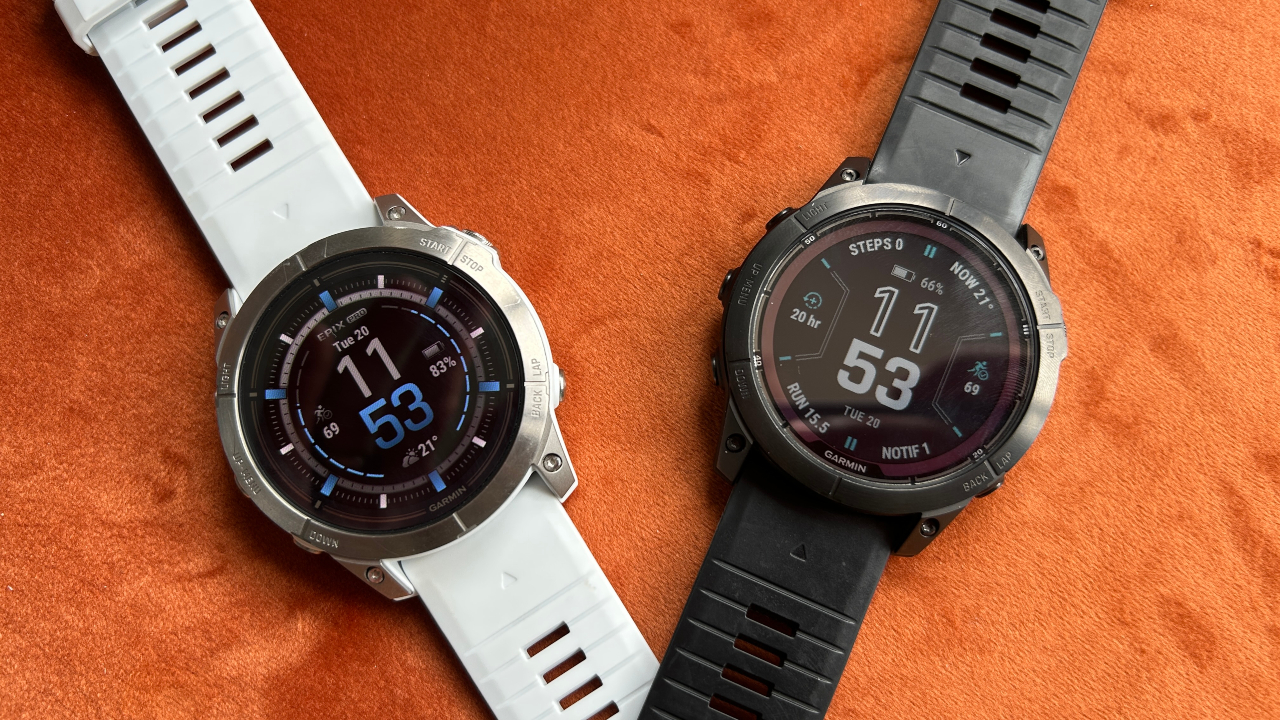
In my opinion the Garmin Epix Pro is the best sports watch available, especially the 51mm model, which escapes the usual criticism of AMOLED watches that they have subpar battery life. The Epix Pro 51mm may not last as long as the Garmin Enduro 2 and Garmin Fenix 7X Pro, which will be attractive to ultramarathon and Ironman athletes in particular, but it’s still got enough juice to satisfy most people while having a fantastic display.
There is stiff competition from the Garmin Forerunner 965, however. It’s got the same excellent screen as the 51mm Epix Pro and will be getting the same software features in time. It’s much lighter and cheaper than the Epix Pro, and lasted me six or seven days on a charge with the screen always on. The Forerunner 965 has a thin titanium bezel on a mostly plastic build—so some will prefer the design of the Epix Pro—and it doesn’t have a flashlight, but having the slimmer, lighter watch for sports is appealing.
The Epix 2 is also a strong alternative. It has the same software features as the Epix Pro and as an older watch, it’s a little cheaper. Unless you opt for the 51mm Epix Pro, there is not a huge upgrade with the new watch, aside from that flashlight. Just note that only the sapphire models of the Epix 2 have multi-band GPS, not the standard ones.
Outside of Garmin, the closest competition comes from the Suunto Vertical, which has great battery life, color maps, multi-band GPS and a bright memory-in-pixel display, though it’s not AMOLED. It’s cheaper than the Epix Pro, but across the board the Garmin is a better watch, on features, accuracy and ease of use.







